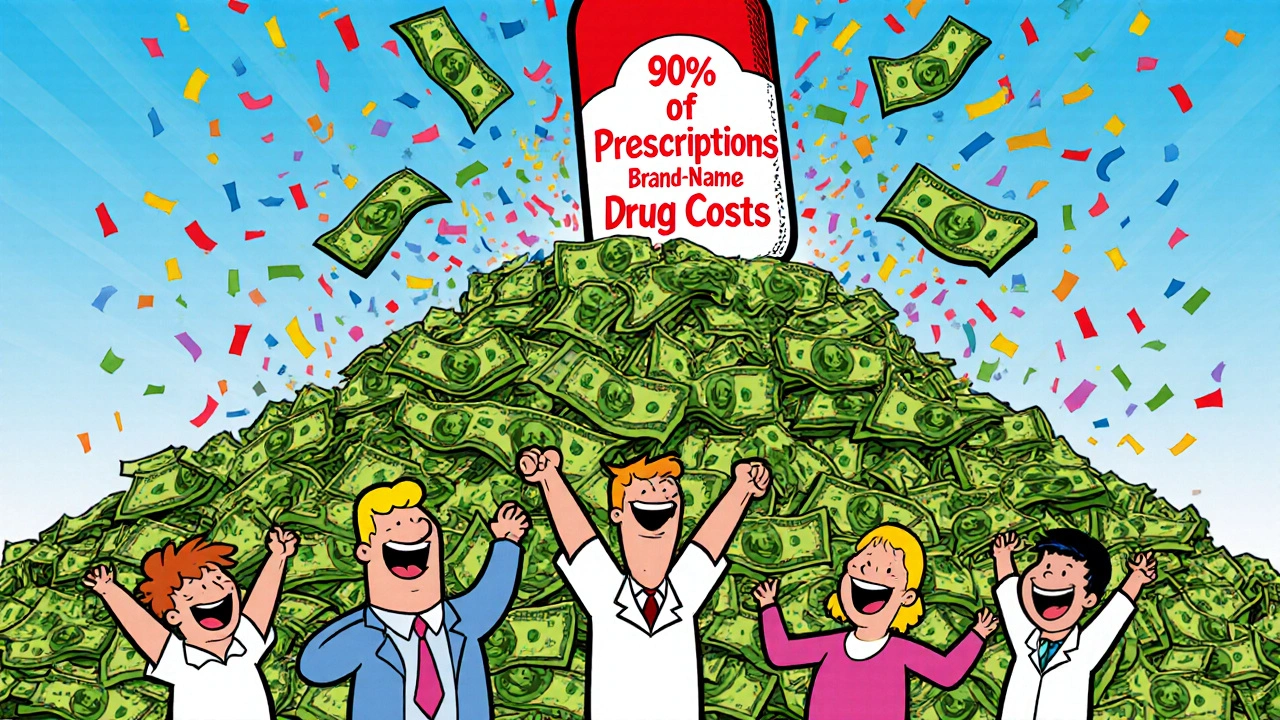Generic drugs saved $482 billion in U.S. healthcare spending in 2024, making up 90% of prescriptions but only 12% of costs. Biosimilars are next, with potential to save hundreds of billions more-if we stop blocking them.
Generic vs Brand Drugs: What Really Matters for Your Health and Wallet
When you pick up a prescription, you might see two options: the familiar brand name or a cheaper generic. Generic drugs, medications that contain the same active ingredient as brand-name versions but are sold under their chemical name. Also known as generic medications, they are required by the FDA to meet the same standards for safety, strength, and quality as the original. The big difference? Price. Generic drugs often cost 80% to 85% less, saving patients and the system billions each year. But here’s the question most people don’t ask: does that lower price mean lower quality?
The short answer? For most people, generic drugs work just as well. The FDA doesn’t allow generics to be "close enough"—they must be bioequivalent, meaning they deliver the same amount of active ingredient into your bloodstream at the same rate as the brand. That’s why millions rely on them daily for high blood pressure, cholesterol, depression, and more. But there are exceptions. For drugs with a narrow therapeutic index—like warfarin, levothyroxine, or certain seizure meds—tiny changes in absorption can matter. That’s why some doctors prefer you stick with one version, brand or generic, and why authorized generics exist: they’re made by the original brand company under a different label, so they’re identical in every way, down to the inactive ingredients.
It’s not just about the pill itself. Generic drug shortages happen not because they’re bad, but because manufacturers can’t make enough profit at rock-bottom prices. When one company stops making a generic, others may not rush in—leading to sudden gaps in supply. That’s why knowing your options matters. You might find that a generic from one company works better for you than another, even if both are technically the same. And while most generics are safe, counterfeit pills are a real risk online—so always buy from trusted sources.
What you’ll find below is a clear, no-fluff collection of posts that cut through the noise. We break down how authorized generics differ from regular ones, why some generics cost 20 times more than others, and when switching from brand to generic could actually hurt your results. You’ll see real examples—from insulin to statins to thyroid meds—where the choice isn’t just about money, but about your body’s response. Whether you’re trying to save cash, avoid side effects, or just understand what’s in your medicine cabinet, this isn’t theory. It’s what people are actually experiencing, and what you need to know before your next refill.

